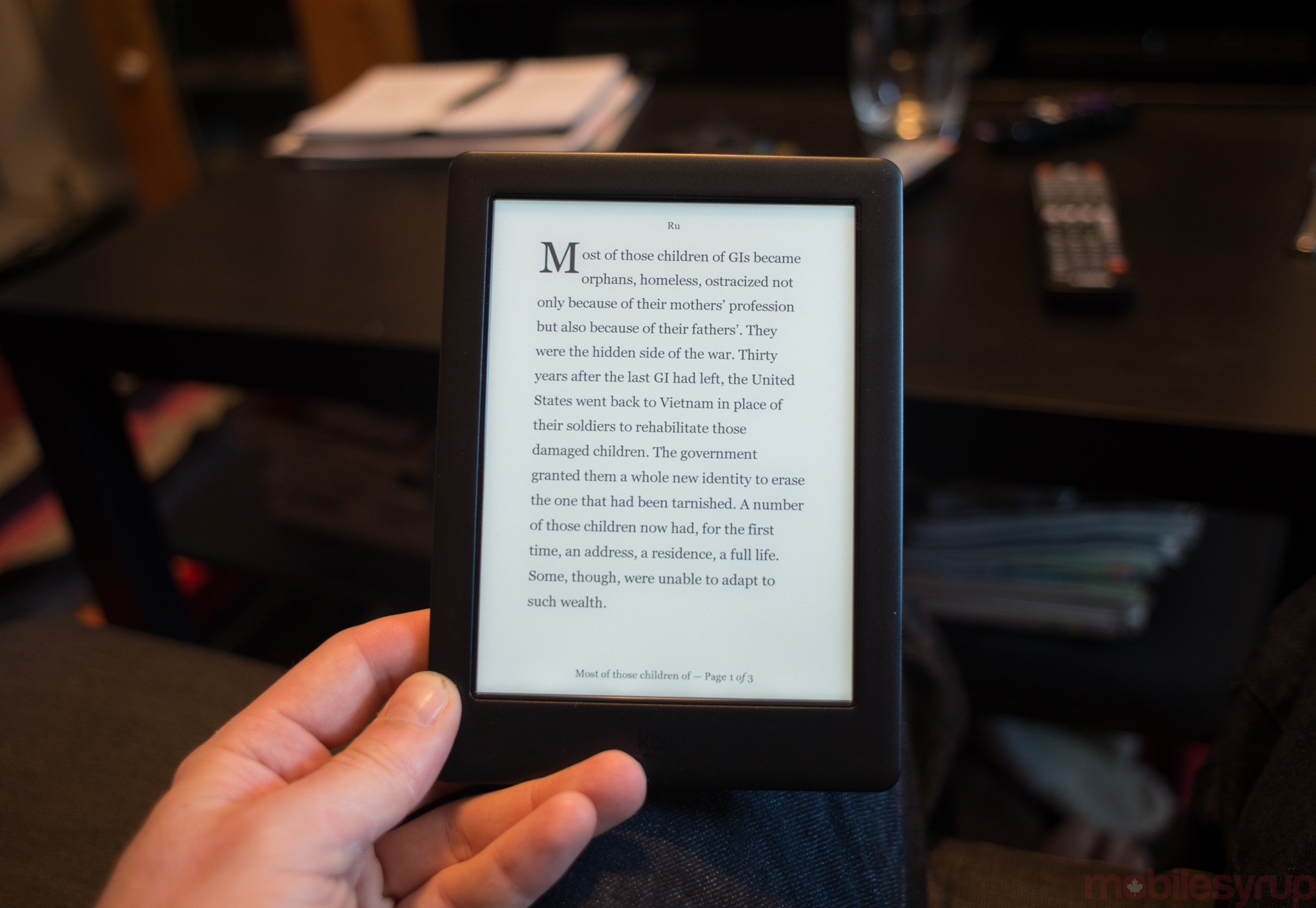
I’m a big fan of not going to sleep with a headache. Or, more specifically, not going to sleep with an LCD-induced headache.
For years, I told myself that reading on my tablet would not affect my sleep, and therefore not my waking life, and that continued until I began reviewing this ereader. The Kobo Glo HD didn’t so much change my life as it changed how I view my sleep. Either way, I am grateful.
The original Kobo Glo was a simple product, promising a relatively inexpensive ereader with a crisp display, even backlight, and plenty of books to choose from. The company, which was purhcased by Japanese ecommerce giant Rakuten in 2011, has remained largely independent since its acquisition, and still runs much of its operation out of Toronto, where it was founded in 2008. Despite the looming size of the Amazon juggernaut, Kobo maintains stoicism in its platform enterprise, combining a robust ebook store with a gaggle of competent, if not particularly unique, ereading hardware.
The Kobo Glo HD builds on the success of its predecessor by offering what anyone would expect in a modern reading device: the highest-resolution, highest-contrast epaper display, a responsive touchscreen, an event, high-powered backlight, and an easy to navigate ebook platform with competitive pricing. Kobo delivers on all these points with the Glo HD.
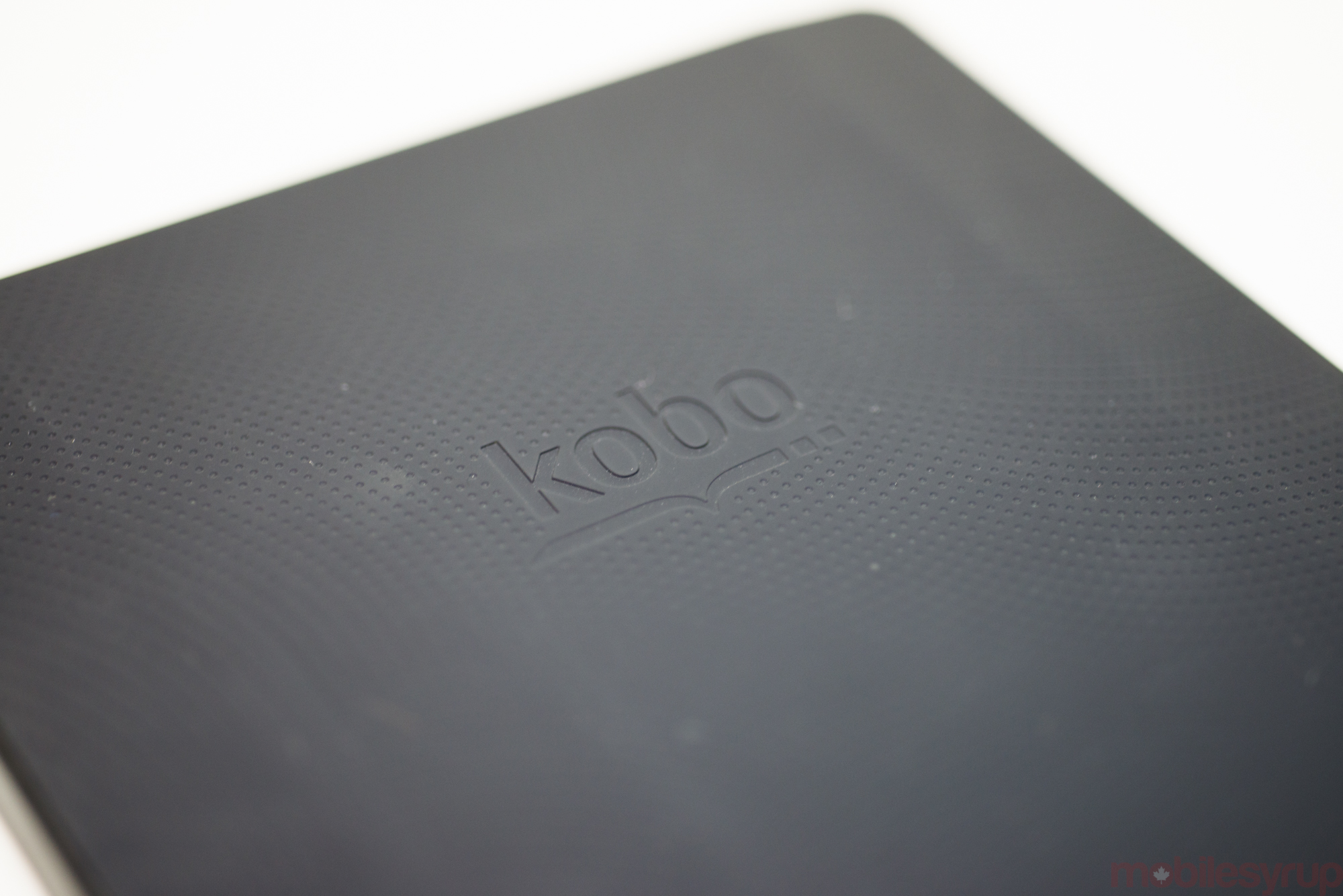
What Works
The Glo HD is an attractive and lightweight reading device whose minimal design practically falls away once the screen is turned on. The device has one button, for power, on the top, but otherwise relies on the responsive touchscreen and intuitive user interface to both navigate through the considerably-sized store and the titles within.
The body itself is comprised of a matte plastic, sturdy and curved, suitable to hold. The back, like all recent Kobo devices, is a supple, textured rubber that works to both keep the device stable in the hand and to make it comfortable to hold for long periods. I’ve always enjoyed this small detail on Kobo’s hardware, and the Glo HD, since it is considerably smaller than the more premium Aura HD, is perfect for one-handed reading sessions.
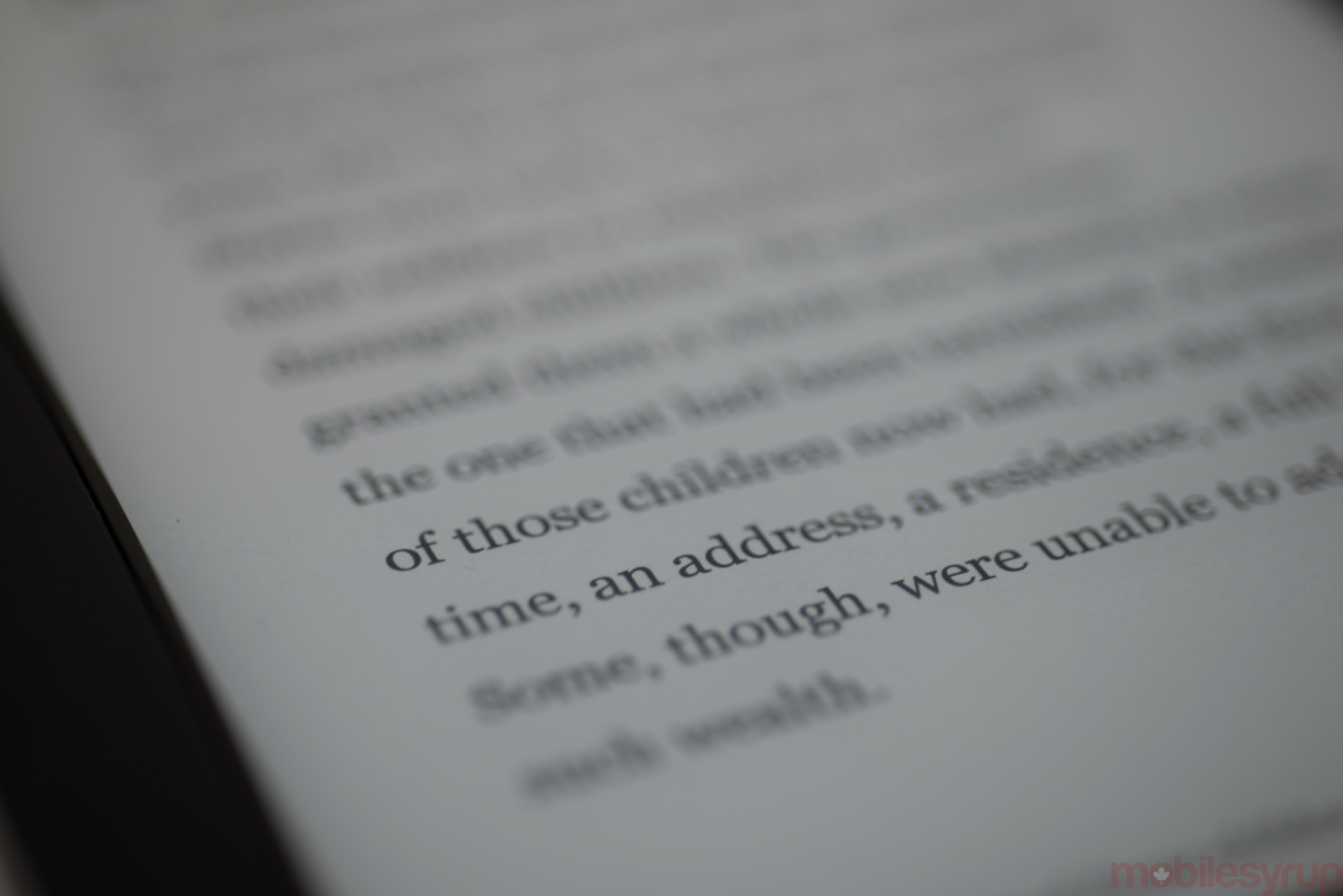
Of all the improvements of the Glo, which was released in 2012, the screen resolution is the most immediately apparent. The Glo HD’s 300 pixel per inch screen is the densest on the market, matching Amazon’s recently-updated Kindle Paperwhite ($139 CAD). Epaper displays have always offered unmatched daylight contrast and minimal eye strain, but one of the major knocks against them has heretofore been resolution – it’s been difficult to match the resolution of paper books.
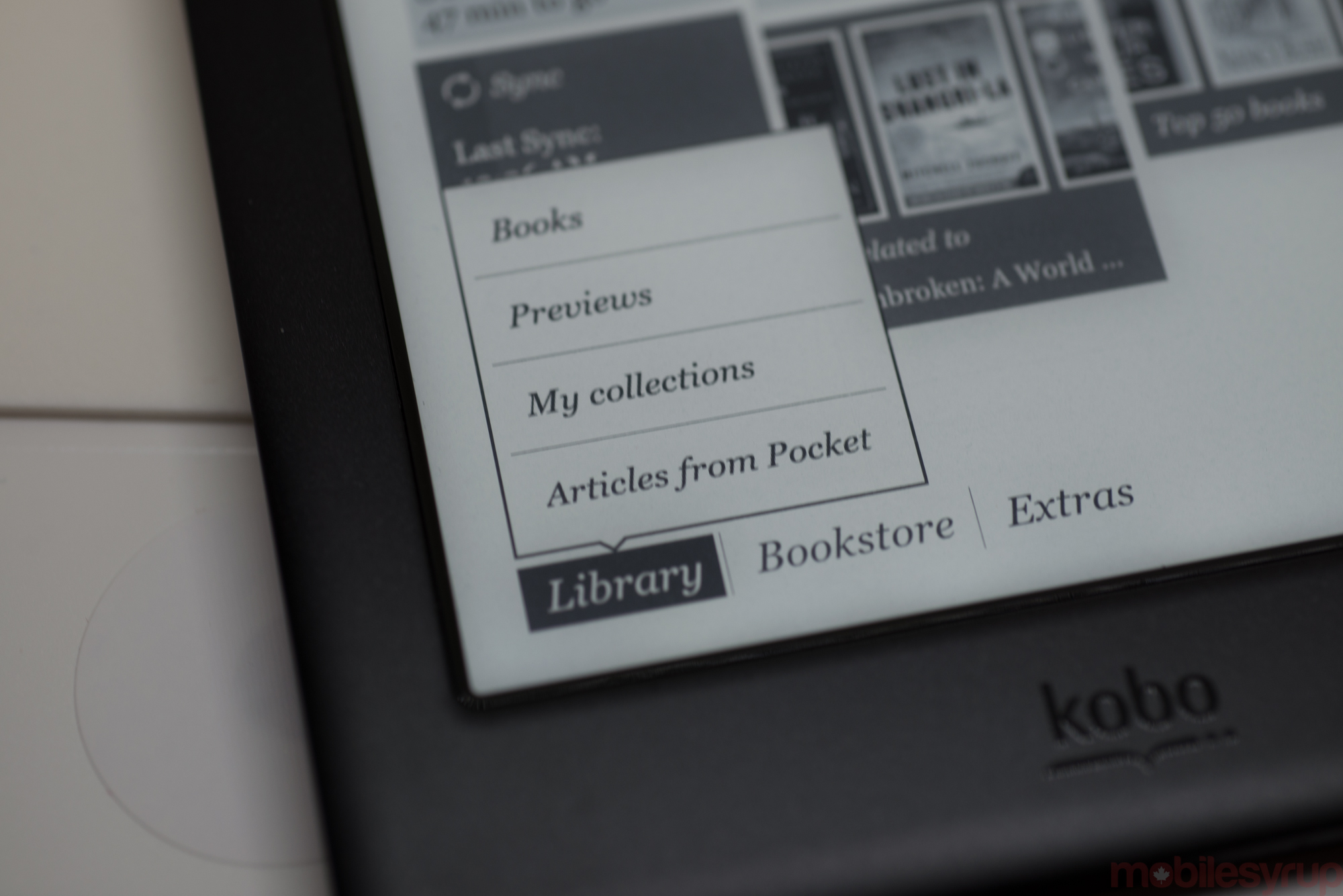
It’s difficult to quantify the added level of enjoyment in reading a book on a sharper display. The transition from 480p to 720p to 1080p to 1440p on smartphones was both measured and geared towards improving media consumption, but text is what we use to bind all of these things together. At some point the density of a screen stops mattering, human eyes unable to discern the individual pixels. But when there is nothing else but text on a page, that thing, density, becomes the most important aspect of the experience. Kobo’s epaper display may be no better than Amazon’s new Kindle Paperwhite, but they’re competitive. The Glo HD’s backlight is similarly capable, with granular steps that take into account every possible ambiance.
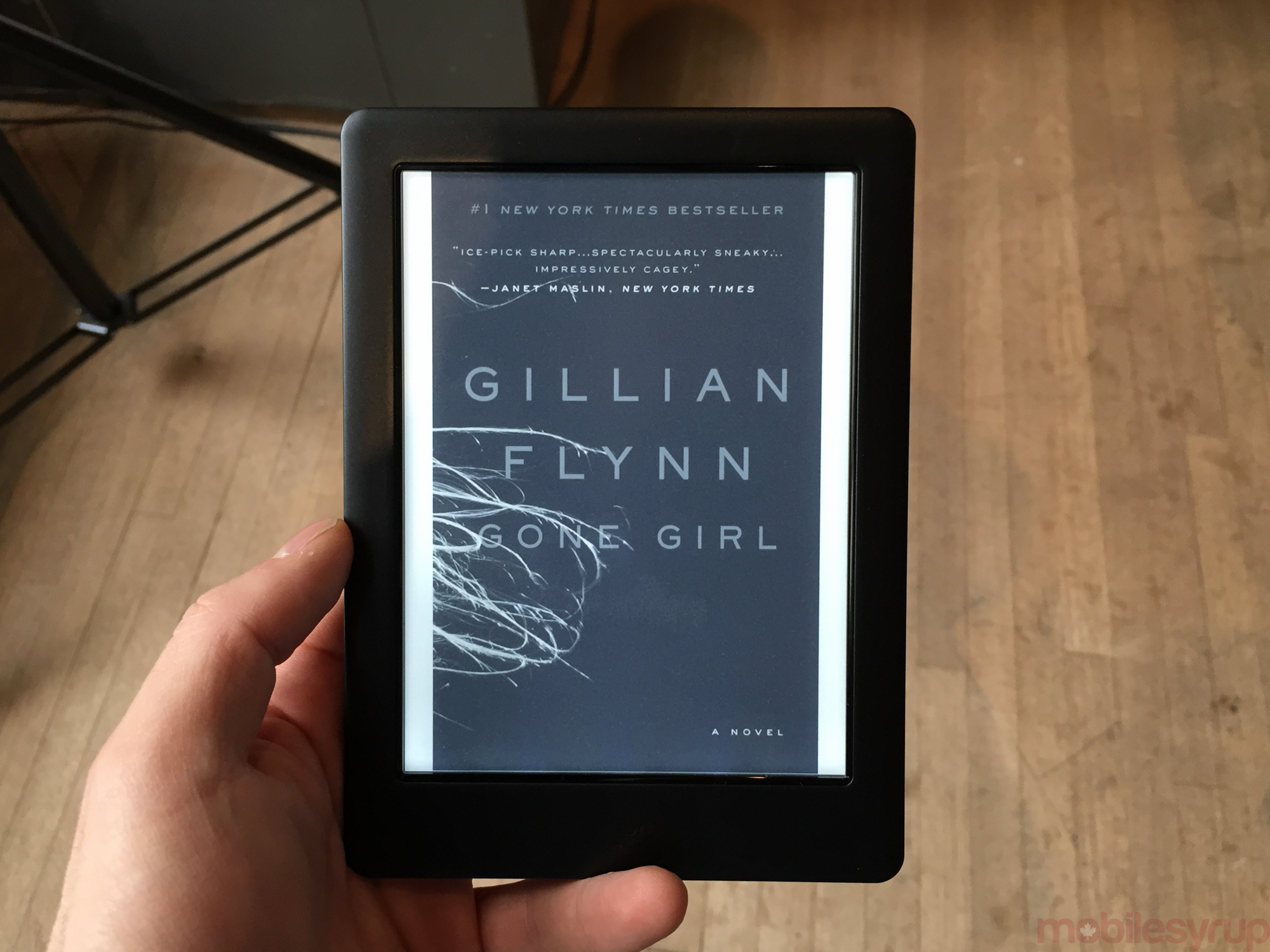
Those two elements, a great screen and a strong, evenly-distributed backlight, are basically all you need for a great reading experience, but Kobo also has a strong online store, which can be accessed on the device itself. The user interface, sparse and clean, makes it easy to add a WiFi network and login to (or create) a Kobo account.
By all accounts, the store is evenly matched with Amazon Canada’s – most books were identically priced between the two. I checked the prices of four books from well-known but not blockbuster authors – Michael Chabon, Haruki Murakami, Stephen King, and Anthony Doerr – and they ranged between $11.99 and $19.99, but did not differ at all between the two services. The buying experience, too, is largely the same, with a purchase made on the Glo HD or any other Kobo ereader being pushed to company’s mobile apps on iOS, Android and Windows.
The Glo HD also has Pocket support, making it easy to find longform articles on the web and make them beautifully laid out for reading later (fun fact: Pocket used to be called Read It Later). The 4GB of internal storage, which is controversially not expandable, is more than enough for thousands of books and pocket articles, and the Kobo forgoes the complexities of supporting other forms of media on the device. This is, and will continue to be, a reading device in perpetuity.
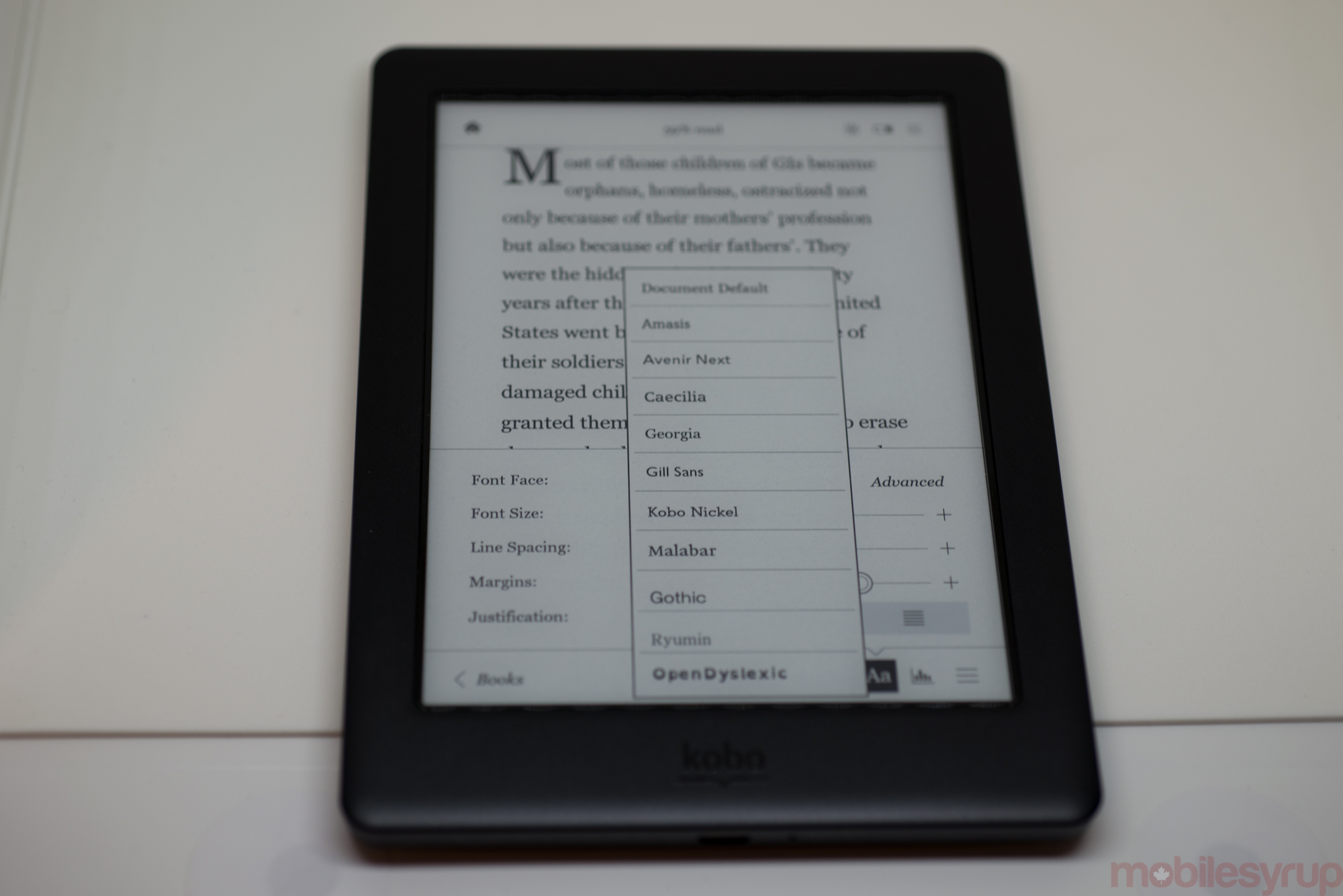
With ten font types and dozens of sizes, everyone will find a suitable face. Kobo Nickel, a serif font specially designed by the company, quickly became my favourite, and the granularity of the various settings – font sizing, line spacing, margins, justification – will be enough to satisfy the most discerning reader.
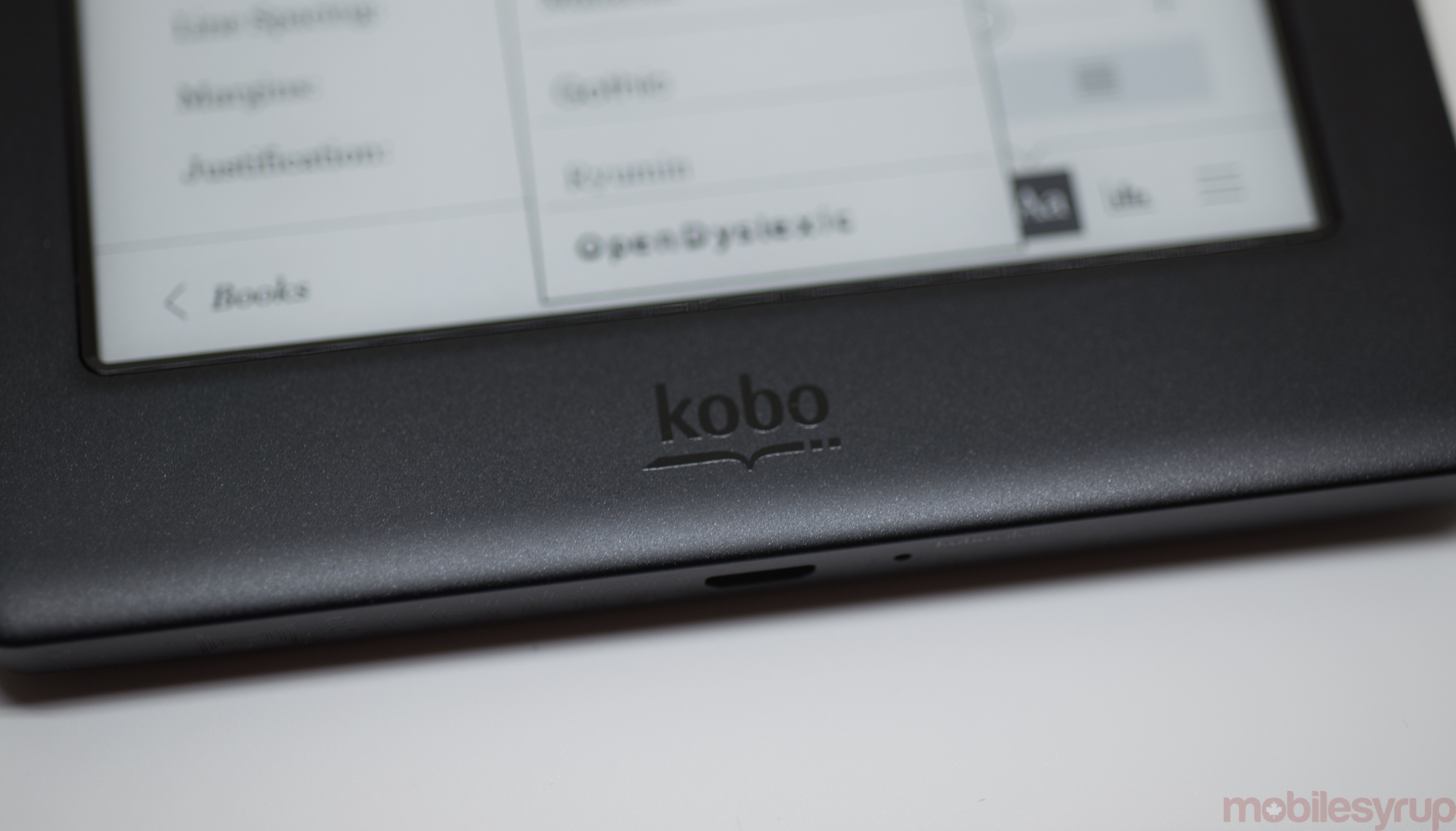
Page turns were quick and relatively seamless, though the screen refreshed every six cycles, as with all other ereaders. Another fun fact: I couldn’t deplete the Kobo Glo’s battery in the month I had the device, but I hear that it dies eventually.
Finally, the Kobo is capable of hooking into the public library system using OverDrive. Alongside Adobe’s DRM software that prevents the books from being stolen and/or hacked, the OverDrive system can push books to the Glo HD (or any other Kobo device) over the air, providing another way of obtaining and reading content besides buying it. Furthermore, the Glo HD can be used with Calabre, a well-known and cross-platform book management app for Windows and OS X to load public domain and DRM-free .epub files to the device.
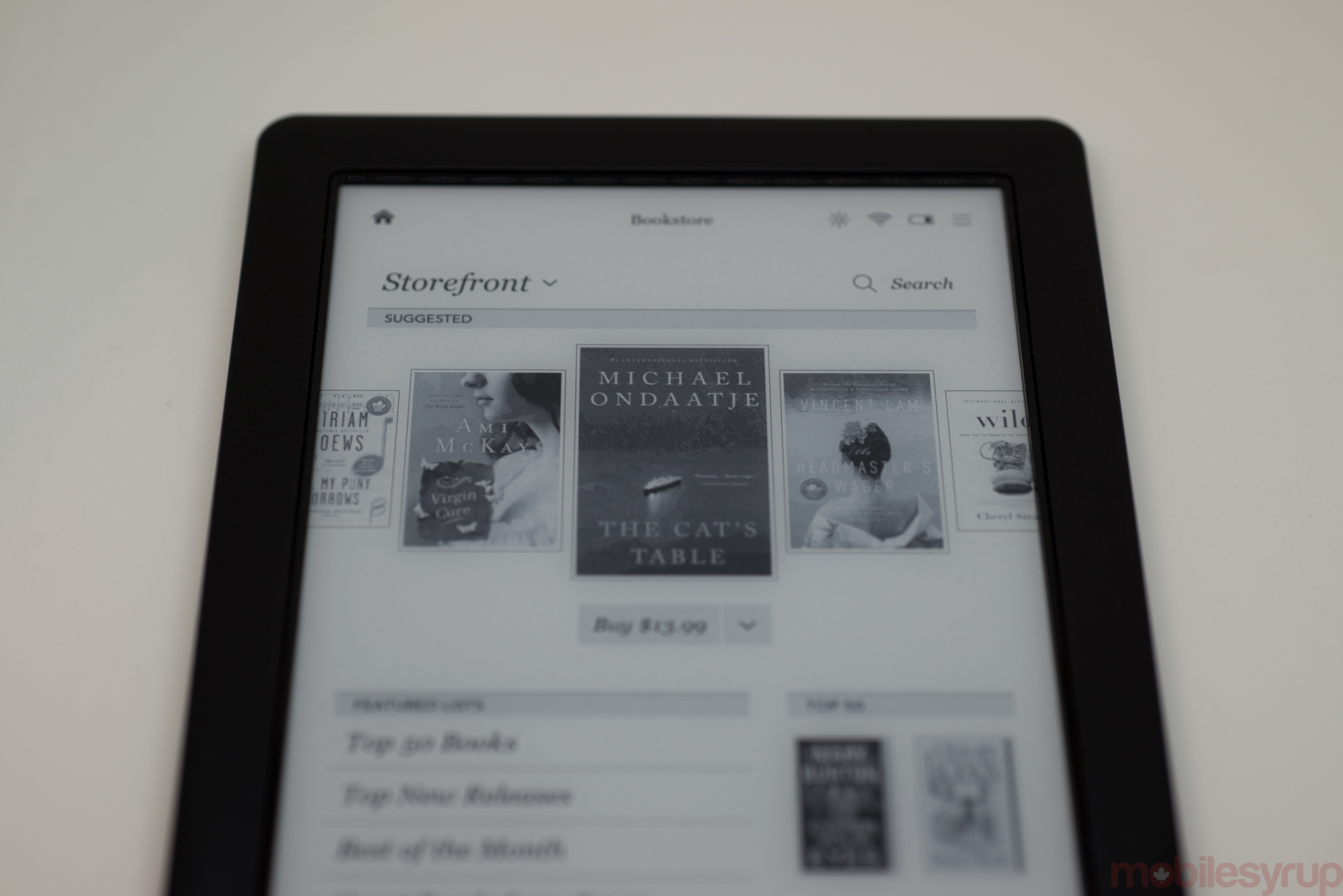
What Needs Work
Most of Kobo’s criticisms come from U.S. users negatively comparing the company’s book ecosystem to Amazon’s Kindle. In Canada, things are much more evenly matched, so Amazon does have a monthly book subscription service – Netflix for books – called Kindle Unlimited, that Kobo can’t quite match.
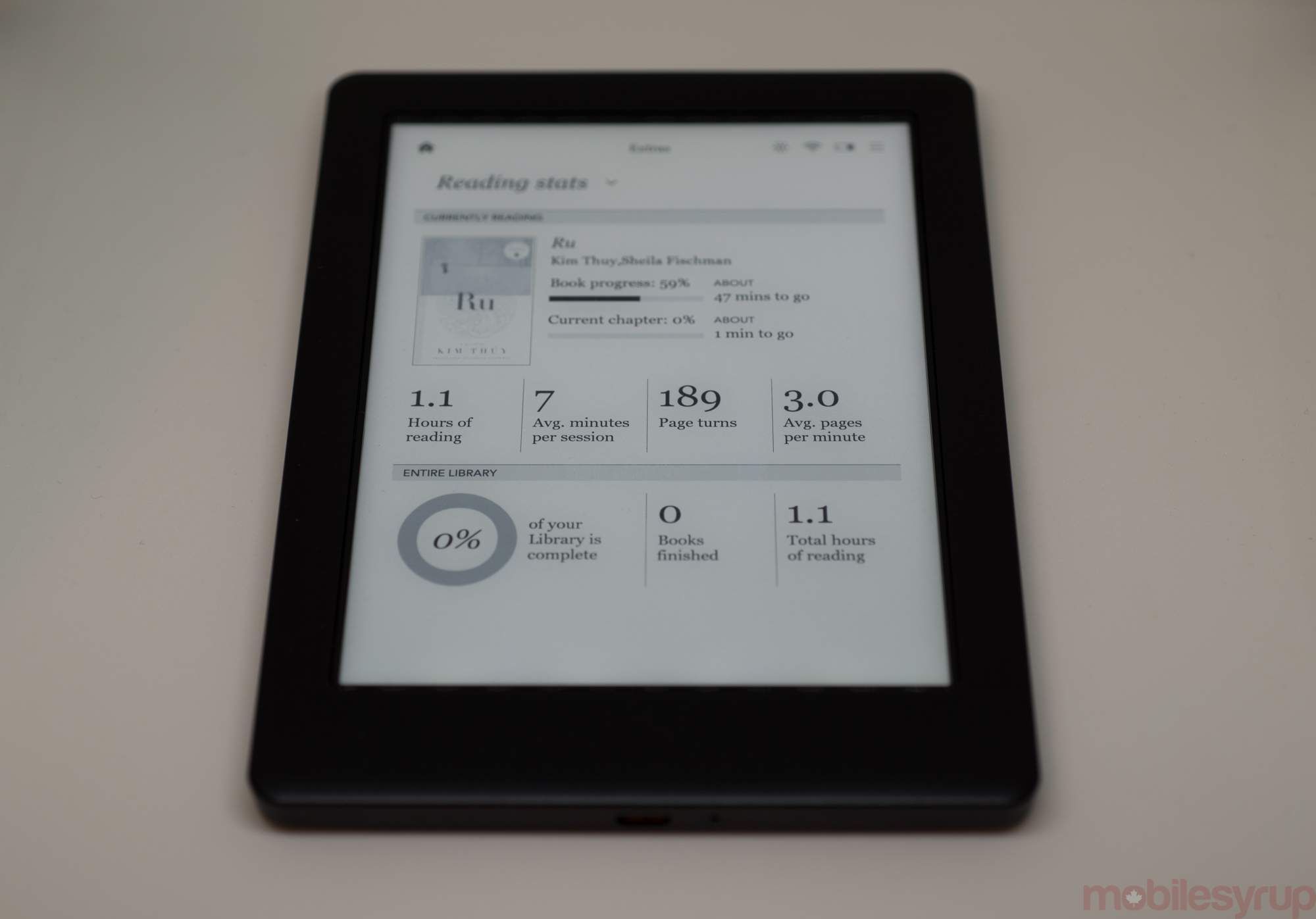
Kobo also pushes the gamification of reading, such as time spent in book, average pages per minute, etc., a little too hard. I don’t really care that I received an award for reading after midnight, but the company has found success keeping people engaged with the system, and it’s easy enough to ignore.
Less easy to ignore is Kobo’s terrible recommendation system, which rarely offered me anything resembling beyond, “You bought an award-winning novel, here are three more award-winning novels.” Truthfully, I haven’t fed Kobo a lot of data, since my buying history on the service is meagre, but algorithms should rely on something a bit more substantive than my own buying history.
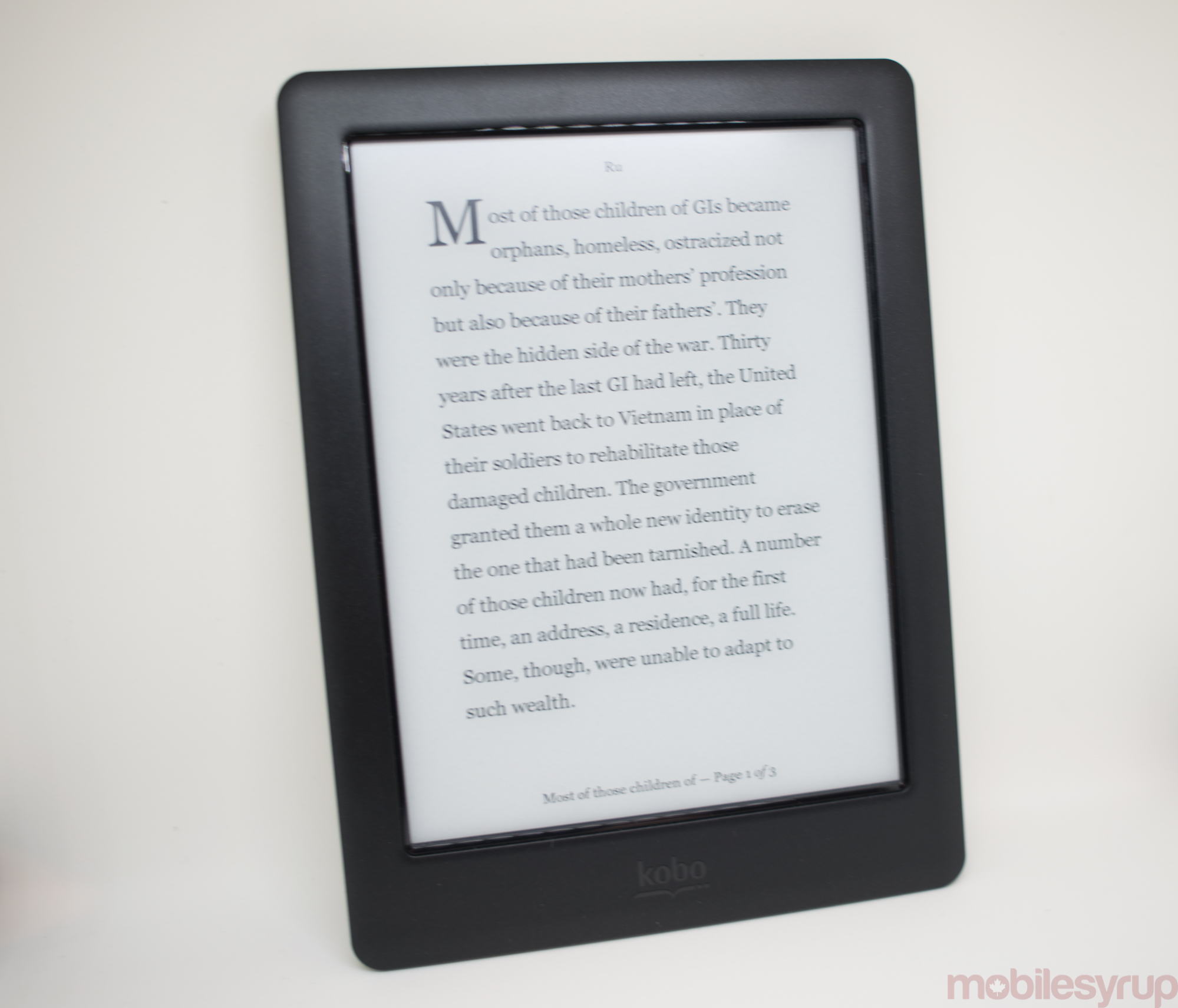
The Upside
There isn’t a lot to dislike about the Kobo Glo HD. It’s well-built, lightweight and inexpensive, with a sharp display, even lighting system and excellent battery.
Its biggest knock is that it is just that: a dedicated ereader, without the bells and whistles one expects from a modern tablet. But even people who regularly read books on an iPad or Nexus tablet should heed the soft white light calling of an ereader, if just to return to that restful sleep you forgot was possible.
Your waking self will thank you.
Pros
- Excellent display and battery life
- Good book selection
- Consistent performance, responsive touchscreen
- Well-built
Cons
- Lacks a service to rival Amazon’s all-you-can-eat Kindle Unlimited
- No expandable storage
The Kobo Glo HD is available from kobobooks.com for $139 CAD.
MobileSyrup may earn a commission from purchases made via our links, which helps fund the journalism we provide free on our website. These links do not influence our editorial content. Support us here.


